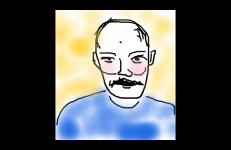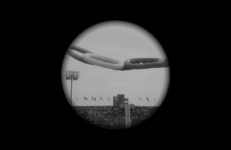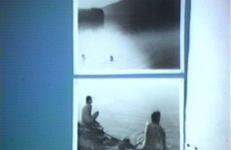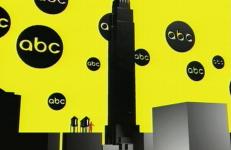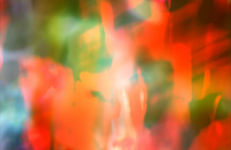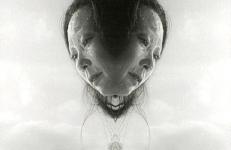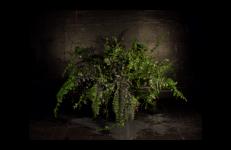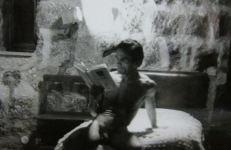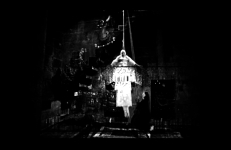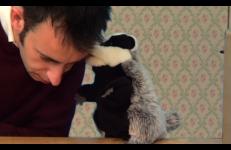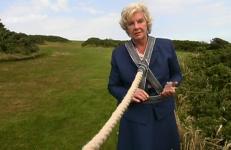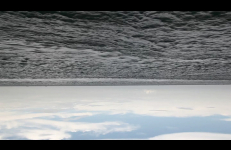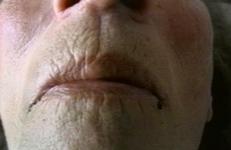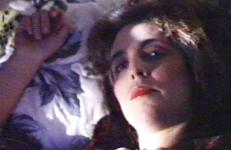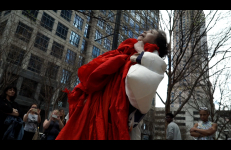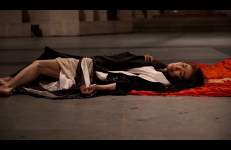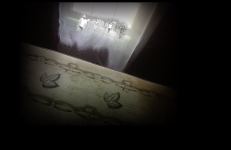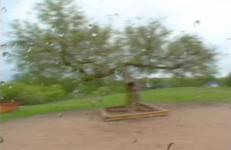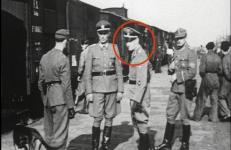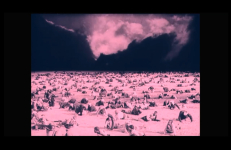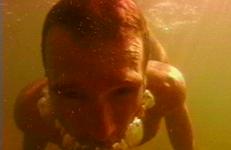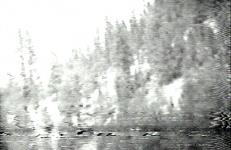Made using voicemails the Kuchar brothers left on her home answering machine, the artist reveals George and Mike in all their candid honesty leading up to and following George’s untimely death in 2011. McGuire floats their voices along a river of digital scribbles and her own voice in singer/songwriter mode. The beauty of the piece lies partly in how the voicemails, used as-is and chronologically, contain an entire narrative about love and loss in a DIY style reminiscent of the Kuchars.
Death and Dying
1968 was the opening of the Summer Olympics in Mexico City, ten days after the massacre of students and civilians by military and police on October 2 in the "Plaza de las Tres Culturas, Tlatelolco."
Three nuns in dark sunglasses sit at a table playing cards while a nurse is inteviewed about "what death looks like” on the soundtrack. As the nurse speaks, in medical detail, of death as a natural process, the nuns sit with party hats on their heads and light birthday candles stuck in bananas. On Death and Dying is a mocking and macabre look at the institutions of death—how hospitals and religions “manage” death. The tape resolves in the conclusion that “death is a job that you do by yourself.”
Take a joyride through comfortable suburbia—a landscape molded by seductive television and corporate America (and keep in mind: disaster is another logo for your consumption...). This is the age of the "culture jammed" consumer preened with Friends hair, Survivor courage, and CNN awareness. A generation emptying their wallets for the most important corporate product of all: lifestyle. The psychological road trip across a slightly battered America travels at One Mile per Minute.
Pandora is one who communicates to the human world the powers of the night. These are glimpses of her visions.
By subjecting fragments from the Akira Kurosawa’s film Rashomon to a mirror effect, Provost creates a hallucinatory scene of a woman’s reverse chrysalis into an imploding butterfly. This physical audiovisual experience produces skewed reflections upon Love, its lyrical monstrosities, and a wounded act of disappearance.
Another in a series of sculptural films. Like it’s partner, 3 peonies, this is a short 16mm film made as a memorial for my grandmother who passed away in 2017. Her voice can be heard on the soundtrack singing a bit of song. What goes when the body goes? How many parents have we got stacked upon us into eternity like ladders to the afterlife?
- Stephanie Barber
Known as one of Italy's most important filmmakers, Pier Paolo Pasolini was first and foremost one of its poets. Combining staged and archival material, this elegiac essay considers Pasolini's brutal murder alongside the texts he published or left unfinished during the last year of his life.
This is the burial hymn for thousands of souls in anthropocentric times. The ghosts of the American way of life. Part of the Hauntology series.
The Badger Series has issues and attempts, each episode, to resolve them. Recasting a glove puppet show through his own present day sensibilities, Paul assumes the role of kindly uncle mentor to a household of capersome woodland creatures. Mortality, self-sacrfice, depression, altered states of consciousness and transgressive art practices are all explored as part of their everyday lives together.
The Badger Series has issues and attempts, each episode, to resolve them. Recasting a glove puppet show through his own present day sensibilities, Paul assumes the role of kindly uncle mentor to a household of capersome woodland creatures. Mortality, self-sacrifice, depression, altered states of consciousness and transgressive art practices are all explored as part of their everyday lives together.
A daughter leads her mother on a rope while they take a walk, looking for a place where the mother can bid her final farewell. Before she leaves, they have a picnic, she sings a song, and they chat about the family. An absurd domestic drama played out against the background of a summer’s day by the seaside.
“I could do wonders if I didn't have a body. But the body grabs me, it slows me, it enslaves me.”
-- Ponce de Léon
“I could do wonders if I didn't have a body. But the body grabs me, it slows me, it enslaves me.”
-- Ponce de Léon
A Prayer For Nettie dramatizes the death of an elderly woman who was Cumming’s photographic model from 1982 to 1993, presenting an improvised series of prayers and memorials for Nettie Harris by people who knew her, and some who did not. In its ambiguous mix of tenderness and aggression, A Prayer For Nettie extends the traditions of the grotesque and the absurd. The fervent prayers of the actors are undermined by indifference, forgetfulness, and the presence of the camera. In the end, comedy turns the tables on piety and remembrance as Nettie looks up from the grave.
In Precious Products we are subtly reminded of this country’s obsession with consumerism and narcissism. George, with his ever-present video-8 camera, attends an opening of Precious Products—an exhibition of artworks satirizing art as commodity. He leaves the art world of San Francisco to spend a Christmas holiday with friends in their opulent home. Ironically, this is the home of a celebrity (another kind of commodity), Russian defector/ballerina Natalia Makanova. Surrounded by all the luxuries of life and Makanova’s image, George muses about death.
Eiko edited this video to illuminate, in fast pace, her solo performance project A Body in Places. The red cloth she often uses in her performance is used as a visual link between different places and communities where Eiko performed.
Eiko performed unannounced in the Cathedral of St. John Divine, New York City as an artist in residence in 2016-2018.
Camera by Alexis Moh.
In response to BLM events and to the whole world of injustice, slaughter and abuse... a small comment.
–– Ken Kobland
"This video continues the journey from the final sequence of Ask the Insects. We turn away from the graveyard, enter the schoolyard, approach the old crippled tree spinning, and sit under it to draw a little cartoon for The New Yorker, while — through some sort of temporal displacement — New Year’s resolutions are being made."
Respite consists of silent black-and-white films shot at Westerbork, a Dutch refugee camp established in 1939 for Jews fleeing Germany. In 1942, after the occupation of Holland, its function was reversed by the Nazis and it became a 'transit camp.' In 1944, the camp commander commissioned a film, shot by a photographer, Rudolph Breslauer.
Part of paraconsistent sequence series and the hauntology series.
“Nancy Holt’s Revolve, a videotape where the artist, off-camera, interviews her friend Dennis Wheeler who is dying of leukemia, uses his illness and mental reflection as a metaphysical site. Her interview is recorded from the perspective of three video cameras that each capture Wheeler from a different point of view. The three-point perspective was designed to give the illusion of infinity. Holt’s three-camera perspective grips the observer with the reality of the finiteness of death...
Sea In The Blood is a personal documentary about living with illness, tracing the relationship of the artist to thalassemia in his sister Nan, and AIDS in his partner Tim. At the core of the piece are two trips. The first is in 1962, when Richard went from Trinidad to England with Nan to see a famous hematologist interested in her unusual case. The second is in 1977 when Richard and Tim made the counterculture pilgrimage from Europe to Asia. The relationship with Tim blossomed, but Nan died before their return.
Originally part of a larger sculptural installation using prospector's tools, this tape reenacts the search for "Olga," a miner's wife who disappeared on her honeymoon in 1936. As Paul and Marlene Kos call out, "Olga... Olga...", the camera scans the Wyoming wilderness, and their search becomes ritualistic, the repetitive calls building in intensity and breaking down into chanted moans.




